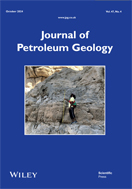To see all the articles in full click here for the Wiley Online Library
Contents of Vol. 45, 2022
Vol. 45, no 4, October 2022
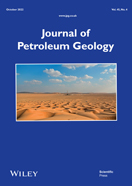
- The age, origin and context of reservoir sandstones underlying the lowermost Silurian “hot” shales in the west of the Sultanate of Oman
A.S.M. Al Ghafri (OQ Exploration and Production LLC, Muscat), A.P. Heward, G.A. Booth and I.A. Abbasi view abstract - Quartzitic sandstones in the Namurian and Lower Westphalian succession of the Southern North Sea: A new high-permeability Carboniferous reservoir type
G. A. Blackbourn (Blackbourn Geoconsulting) and J. D. Collinson view abstract - Source rock potential of the Upper Triassic Chang 7 member in the western Ordos Basin, China
Guo Chen (Yangtze University), Ning Wang, Shuai Yang Xiaofeng Li, Pengfei Zhang and Yanqing Su view abstract - Geochemical analyses of seep oils in the southern Gafsa Basin, SW Tunisia: reassessment of regional hydrocarbon potential
Kamel Dadi (ENIS, Sfax, Tunisia), Riadh Ahmadi, Anis Belhaj Mohamed, Chaouki Khalfi, Najwa Mbarki and Jamel Abdennaceur Ouali view abstract - Electrofacies definition and zonation of the Lower Cretaceous Barra Velha Formation carbonate reservoir in the pre-salt sequence of the Santos Basin, SE Brazil
M. Molina Camargo (University of Campinas, Brazil), G. F. Chinelatto, M. Basso and A. C. Vidal view abstract - Cover photo: The cover photograph shows the Maisoorah-1 (MIS-1) wellsite in Block 66 in the west of the Sultanate of Oman (see paper by Al Ghafri et al. on pp 345-362 of this issue). The location is at the edge of the Empty Quarter, and surface sand dunes (in places up to 100 m high) hinder access and seismic acquisition. Photo courtesy of Zoltan Kovacs (Drilling Manager, MOL).
Vol. 45, no 3, July 2022
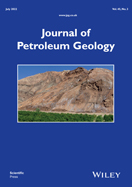
- Ratana field, Potwar fold belt, northern Pakistan: high intensity fracture zones related to major thrust faults as revealed by seismic fracture prediction
Khalid Shoaib (Orient Petroleum, Pakistan), Zaheer A. Zafar, Zeeshan Ali Raja and Stuart D. Burley view abstract - The La Luna/Río Negro(.) petroleum system at the Urdaneta West field, Lake Maracaibo Basin, NW Venezuela: 1D basin modelling and secondary oil migration
M. Escobar (University of Zulia, Venezuela), J.G. Díaz, G. Márquez, C. Boente and R. Tocco view abstract - Structural style in the south Dezful Embayment, SW Iran: combined influence of the Zagros Frontal fault system and the detachment in the Miocene Gachsaran Formation
Islam Tavakolian (Tarbiat Modares University, Tehran), Ali Yassaghi and Mahdi Najafi view abstract - Geochemistry and carbon isotope characteristics of associated gases from oilfields in the NW Greater Caucasus, Russia
N. V. Oblasov (Tomsk, Russia), I. V. Goncharov, A. V. Derduga and I. V. Kunitsyna view abstract - Cover photo: The cover photograph shows a surface exposure of part of the active Garmsar Salt Diapir (trees in foreground for scale); to the left are flanking halokinetic strata. The diapir is located in the northern Central Iran Basin near the southern margin of the Alborz Mountains. Evaporites in similar diapirs and other mobile structures in SW Iran are in general sourced from the Miocene Gachsaran Formation, which in the subsurface may serve as an intermediate décollement structurally decoupling the over- and underlying successions. See the associated paper by Tavakolian et al. on pp 303-324 of this issue. Photo by Mahdi Najafi.
Vol. 45, no 2, April 2022
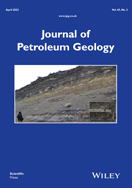
- Sequence stratigraphy, palaeogeography and petroleum plays of the Cenomanian – Turonian succession of the Arabian Plate: an updated synthesis
A. D. Bromhead (Halliburton UK), F. S. P. van Buchem, M. D. Simmons and R. B. Davies view abstract - Composition of light hydrocarbons in Jurassic tight oils in the Central Sichuan Basin, China: origin and source rock correlation
Xiaolin Lu (China University of Petroleum Beijing), Meijun Li, Tengqiang Wei, Changjiang Wu, Youjun Tang, Xiaojuan Wang, Haitao Hong, Yuan Liu and Zichao Ran view abstract - Tectonostratigraphic evolution and hydrocarbon prospectivity south of Gwadar Bay, Makran accretionary wedge, offshore SW Pakistan
Conall Cromie (Royal Holloway University of London), Nicola Scarselli, Jonathan Craig, Moin R. Khan and Abid Hussain view abstract - Neocomian – Barremian lacustrine shales in the Mayo Oulo-Léré Basin, North Cameroon: depositional environment and petroleum potential
Bachirou Mfayakouo Chavom (University of Maroua, Cameroon), François Baudin, Josiane F. Kwéa Nzouedjio, Johann Schnyder, Aicha Maloum and Serge Edouard Angoua Biouélé view abstract - Development of fibrous calcite veins related to hydrocarbon generation and overpressuring in organic-rich shale source rocks: the Vaca Muerta Formation, Neuquén Basin, Argentina
J. B. Spacapan (YPF Buenos Aires), M. Comerio, R. Ruiz and E. Rocha view abstract - Cover photo: The cover photograph shows the base of the Tithonian - lower Valanginian Vaca Muerta Formation in the Pampa Tril area in the northern Neuquén Basin, Argentina. The formation is an important source rock in the basin as well as an unconventional reservoir target. Overlying the orange-yellow interval rich in hydrated iron oxide minerals are thick black shales and fine-grained sandstones. Spacapan et al. report on the development of fibrous calcite bed-parallel veins (BPVs) in the Vaca Muerta Formation in the paper on pp. 219-248 of this issue. Inset at lower right shows calcite cements in a BPV within an interval of Vaca Muerta black shales. Photos by Marcos Comerio.
Vol. 45, no 1, January 2022
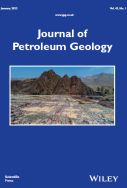
- A new oil seepage in the Oman Mountains and its geological, geochemical
and petroleum systems context
Mohammed Al Kindi (Earth Sciences Consultancy Centre, Muscat), Mohammed Al-Ghammari, Alan Heward, Paul Taylor and George Siavalas view abstract - Stratigraphic correlation and source rock characteristics of the Baluti
Formation from selected wells in the Zagros fold belt, Kurdistan Region,
northern Iraq
Ibrahim M. J. Mohialdeen (University of Sulaimani), Sardar S. Fatah, Rzger A. Abdula, Mohammed H. Hakimi, Wan H. Abdullah, Polla A. Khanaqa and Grenville A. Lunn view abstract - Biomarker geochemistry of Paleogene crude oils and source rocks from the
Raoyang Sag, Bohai Bay Basin, NE China: an oil – source rock correlation study
Shengmin Su and Youlu Jiang (China University of Petroleum, Qingdao) view abstract - Severe biodegradation of crude oils from the Quiriquire field, Eastern Venezuela
Basin
Liliana López (Universidad Central de Venezuela, Caracas), Jesús A. Romero and Salvador Lo Mónaco view abstract - Geochemical composition of Ordovician oils from the Tuoputai Region, northern
Tarim Basin, NW China:source rock correlation
Bin Cheng (China University of Petroleum), Hua Liu, Xian Wu, Shen Wang and Zepeng Wu
view abstract - Cover photo: the cover photograph shows allochthonous Upper Triassic to Middle Jurassic deep oceanic sediments of the Hamrat Duru Group (Hawasina Complex) near the Village of Sabt in Wadi Bani Khalid, NE Oman. The sequence is composed of thinly-bedded radiolarian cherts, shales and micritic limestones. An unusual natural oil seepage occurring nearby in fractured limestones of the Hamrat Duru Group, unrelated to any of Oman’s five main oil families, is described by Al Kindi et al. in the paper on pp. 5-28. Photo by Mohammed Al Kindi.
